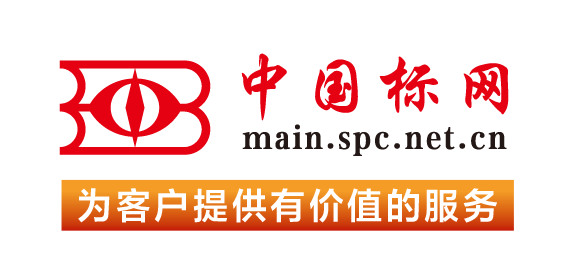【国外标准】 Standard Practice for Guarded-Hot-Plate Design Using Circular Line-Heat Sources
本网站 发布时间:
2024-02-28
开通会员免费在线看70000余条国内标准,赠送文本下载次数,单本最低仅合13.3元!还可享标准出版进度查询、定制跟踪推送、标准查新等超多特权!
查看详情>>
适用范围:
4.1 This practice describes the design of a guarded hot plate with circular line-heat sources and provides guidance in determining the mean temperature of the meter plate. It provides information and calculation procedures for: (1) control of edge heat loss or gain (Annex A1); (2) location and installation of line-heat sources (Annex A2); (3) design of the gap between the meter and guard plates (Appendix X1); and (4) location of heater leads for the meter plate (Appendix X2).4.2 A circular guarded hot plate with one or more line-heat sources is amenable to mathematical analysis so that the mean surface temperature is calculated from the measured power input and the measured temperature(s) at one or more known locations. Further, a circular plate geometry simplifies the mathematical analysis of errors resulting from heat gains or losses at the edges of the specimens (see Refs (10, 11)).4.3 The line-heat source(s) is (are) placed in the meter plate at a prescribed radius such that the temperature at the outer edge of the meter plate is equal to the mean surface temperature over the meter area. Thus, the determination of the mean temperature of the meter plate is accomplished with a small number of temperature sensors placed near the gap.4.4 A guarded hot plate with one or more line-heat sources will have a radial temperature variation, with the maximum temperature differences being quite small compared to the average temperature drop across the specimens. Provided guarding is adequate, only the mean surface temperature of the meter plate enters into calculations of thermal transmission properties.4.5 Care shall be taken to design a circular line-heat-source guarded hot plate so that the electric-current leads to each heater either do not significantly alter the temperature distributions in the meter and guard plates or else affect these temperature distributions in a known way so that appropriate corrections are applied.4.6 The use of one or a few circular line-heat sources in a guarded hot plate simplifies construction and repair. For room-temperature operation, the plates are typically of one-piece metal construction and thus are easily fabricated to the required thickness and flatness. The design of the gap is also simplified, relative to gap designs for distributed-heat-source hot plates.4.7 In the single-sided mode of operation (see Practice C1044), the symmetry of the line-heat-source design in the axial direction minimizes errors due to undesired heat flow across the gap.1.1 This practice covers the design of a circular line-heat-source guarded hot plate for use in accordance with Test Method C177.NOTE 1: Test Method C177 describes the guarded-hot-plate apparatus and the application of such equipment for determining thermal transmission properties of flat-slab specimens. In principle, the test method includes apparatus designed with guarded hot plates having either distributed- or line-heat sources.1.2 The guarded hot plate with circular line-heat sources is a design in which the meter and guard plates are circular plates having a relatively small number of heaters, each embedded along a circular path at a fixed radius. In operation, the heat from each line-heat source flows radially into the plate and is transmitted axially through the test specimens.1.3 The meter and guard plates are fabricated from a continuous piece of thermally conductive material. The plates are made sufficiently thick that, for typical specimen thermal conductances, the radial and axial temperature variations in the guarded hot plate are quite small. By proper location of the line-heat source(s), the temperature at the edge of the meter plate is made equal to the mean temperature of the meter plate, thus facilitating temperature measurements and thermal guarding.1.4 The line-heat-source guarded hot plate has been used successfully over a mean temperature range from − 10 to + 65°C, with circular metal plates and a single line-heat source in the meter plate. The chronological development of the design of circular line-heat-source guarded hot plates is given in Refs (1-9).2NOTE 2: Detailed drawings and descriptions for the construction of two line-heat-source guarded-hot-plate apparatuses are available in the adjunct.31.5 This practice does not preclude (1) lower or higher temperatures; (2) plate geometries other than circular; (3) line-heat-source geometries other than circular; (4) the use of plates fabricated from ceramics, composites, or other materials; or (5) the use of multiple line-heat sources in both the meter and guard plates.1.6 The values stated in SI units are to be regarded as standard. No other units of measurement are included in this standard.1.7 This standard does not purport to address all of the safety concerns, if any, associated with its use. It is the responsibility of the user of this standard to establish appropriate safety, health, and environmental practices and determine the applicability of regulatory limitations prior to use.1.8 This international standard was developed in accordance with internationally recognized principles on standardization established in the Decision on Principles for the Development of International Standards, Guides and Recommendations issued by the World Trade Organization Technical Barriers to Trade (TBT) Committee.
标准号:
ASTM C1043-19
标准名称:
Standard Practice for Guarded-Hot-Plate Design Using Circular Line-Heat Sources
英文名称:
Standard Practice for Guarded-Hot-Plate Design Using Circular Line-Heat Sources标准状态:
Active-
发布日期:
-
实施日期:
出版语种:
- 其它标准
- 推荐标准
- ASTM 51401-21 Standard Practice for Use of a Dichromate Dosimetry System
- ASTM 51956-21 Standard Practice for Use of a Thermoluminescence-Dosimetry System (TLD System) for Radiation Processing
- ASTM A1010/A1010M-24 Standard Specification for Higher-Strength Martensitic Stainless Steel Plate, Sheet, and Strip
- ASTM A1016/A1016M-24 Standard Specification for General Requirements for Ferritic Alloy Steel, Austenitic Alloy Steel, and Stainless Steel Tubes
- ASTM A105/A105M-24 Standard Specification for Carbon Steel Forgings for Piping Applications
- ASTM A1064/A1064M-24 Standard Specification for Carbon-Steel Wire and Welded Wire Reinforcement, Plain and Deformed, for Concrete
- ASTM A108-24 Standard Specification for Steel Bar, Carbon and Alloy, Cold-Finished
- ASTM A1080/A1080M-24 Standard Practice for Hot Isostatic Pressing of Steel, Stainless Steel, and Related Alloy Castings
- ASTM A1090/A1090M-19(2024) Standard Specification for Forged Rings and Hollows for Use as Base Plates in Power Transmission Structures
- ASTM A1115/A1115M-24 Standard Practice for Construction of Mechanically Stabilized Earth Walls with Inextensible Soil Reinforcement
- ASTM A1128-24 Standard Specification for Stainless Steel Shielded, Rubber Gasketed Couplings Having an Integral Restraint Feature for Joining Hubless Cast Iron Soil Pipes and Fittings Where External Restraint Is Required
- ASTM A179/A179M-24 Standard Specification for Seamless Cold-Drawn Low-Carbon Steel Heat-Exchanger and Condenser Tubes
- ASTM A234/A234M-24 Standard Specification for Piping Fittings of Wrought Carbon Steel and Alloy Steel for Moderate and High Temperature Service
- ASTM A242/A242M-24 Standard Specification for High-Strength Low-Alloy Structural Steel
- ASTM A249/A249M-24a Standard Specification for Welded Austenitic Steel Boiler, Superheater, Heat-Exchanger, and Condenser Tubes
 我的标准
我的标准 购物车
购物车 400-168-0010
400-168-0010














